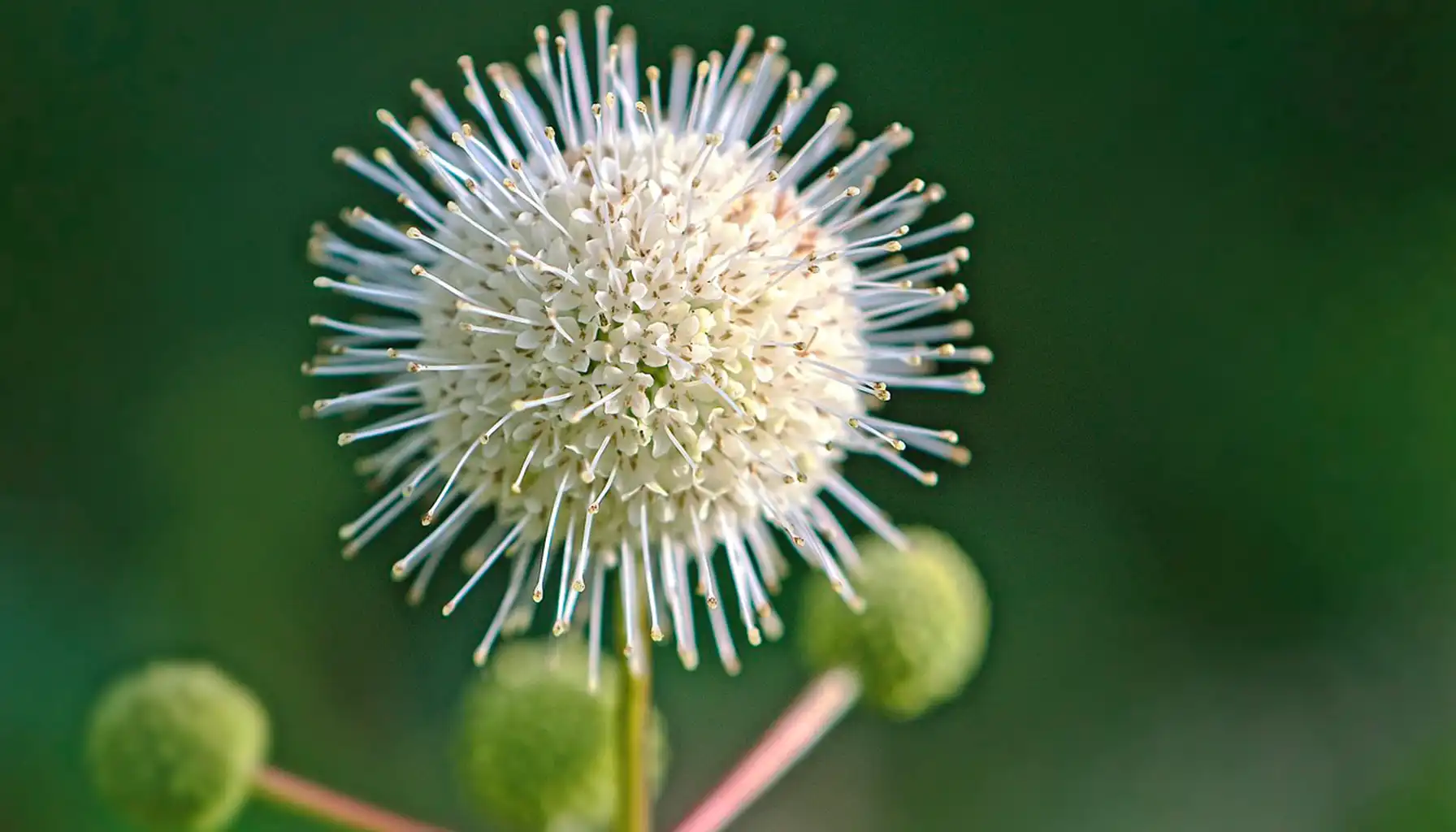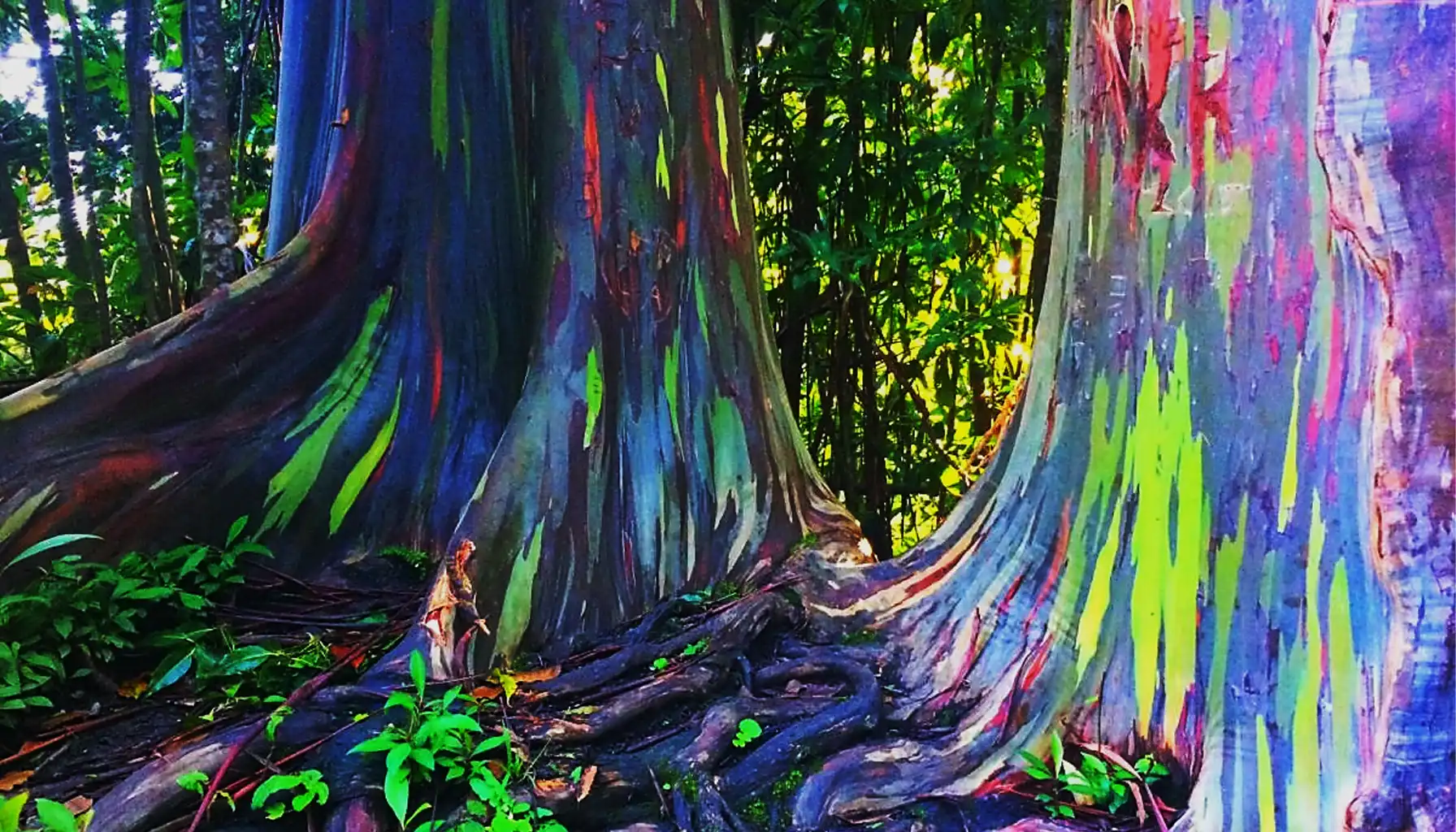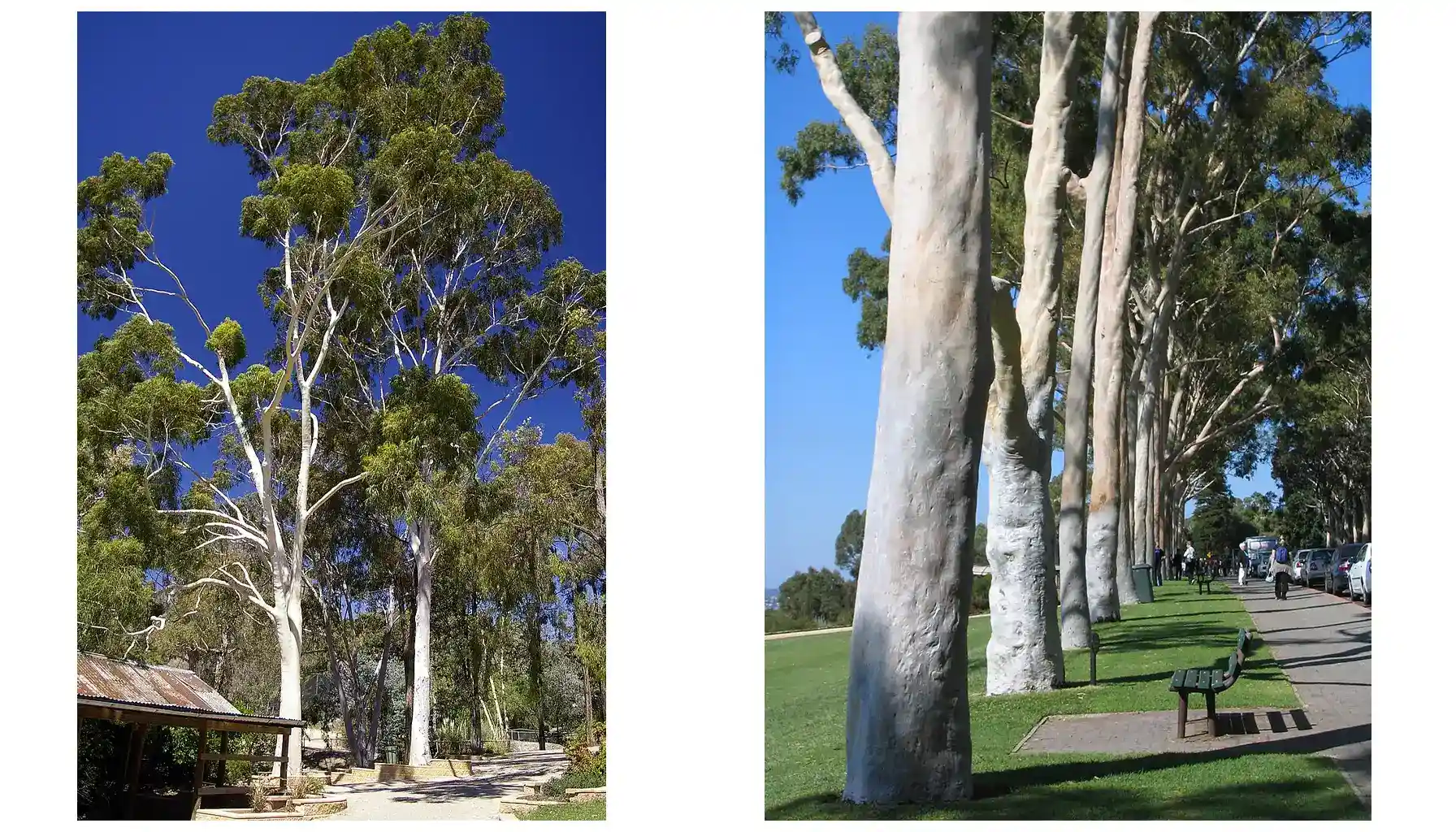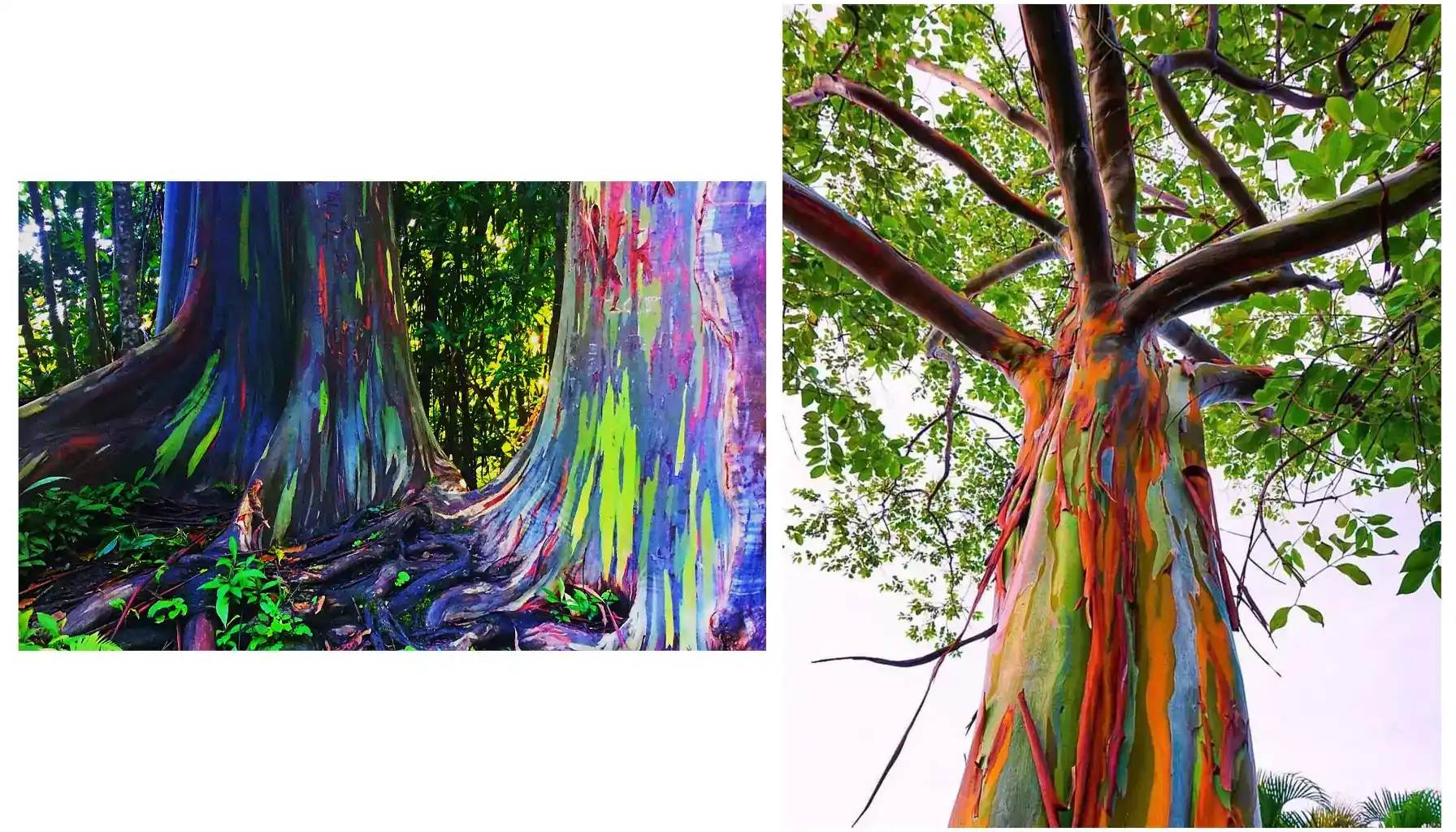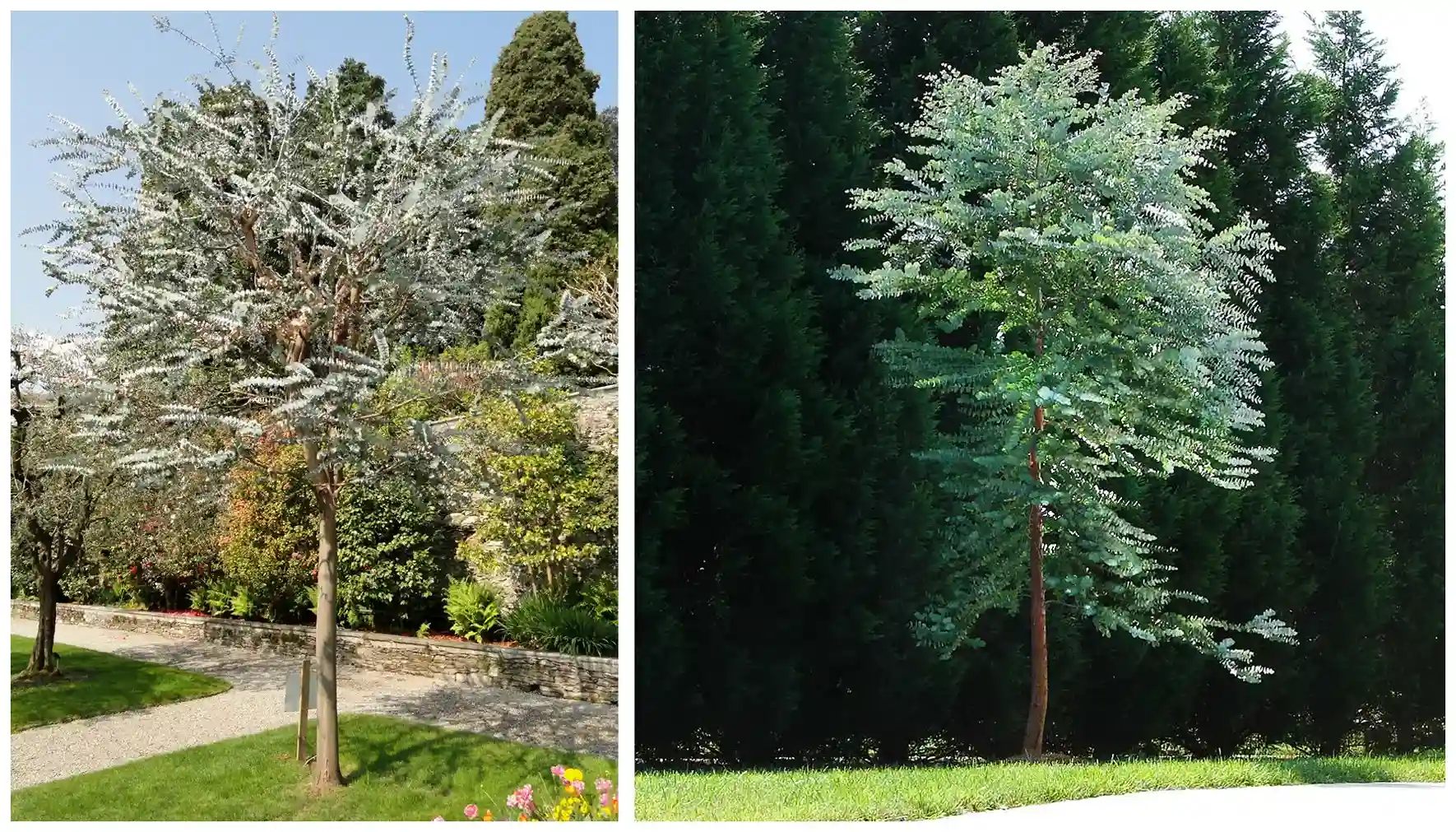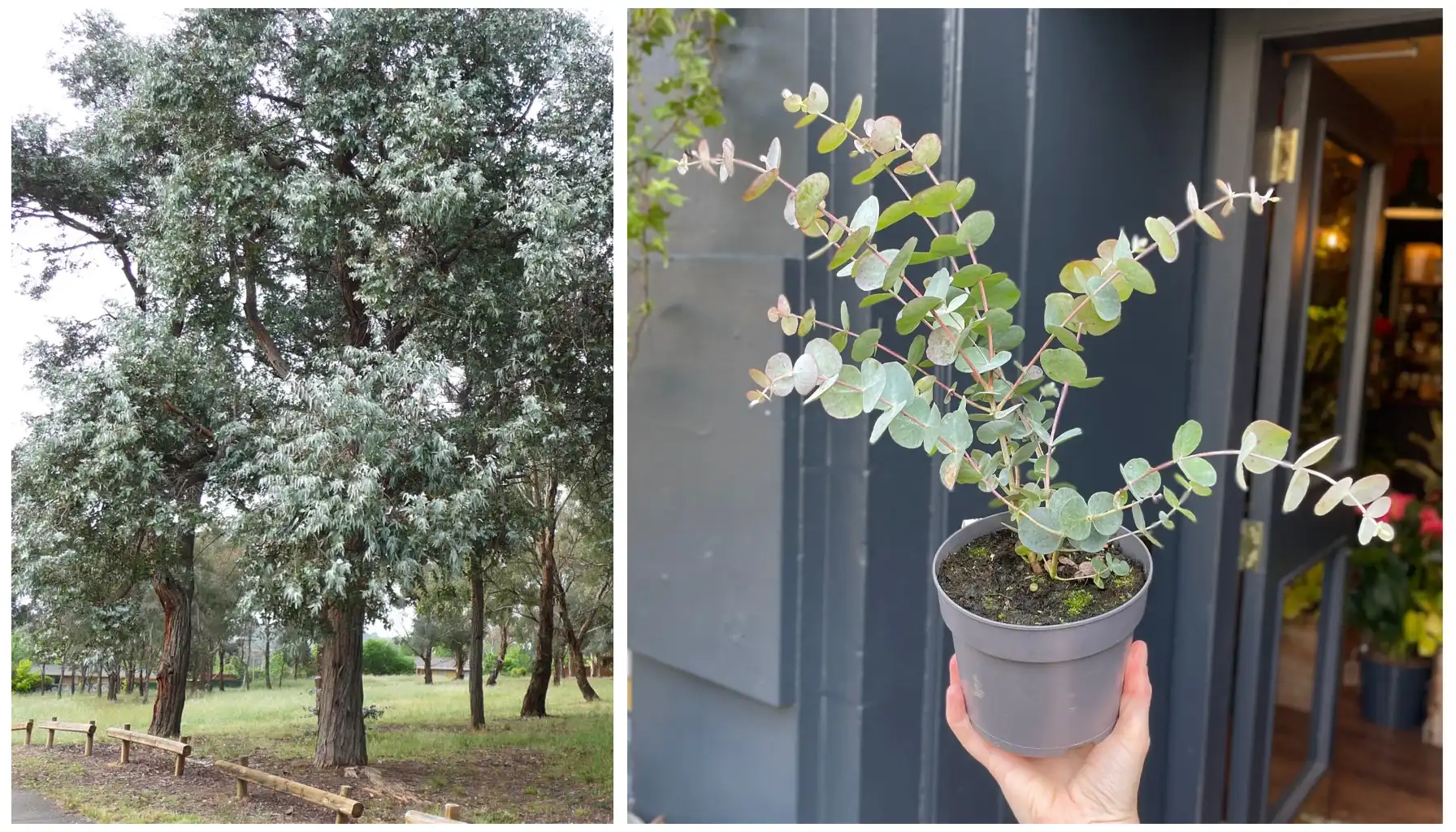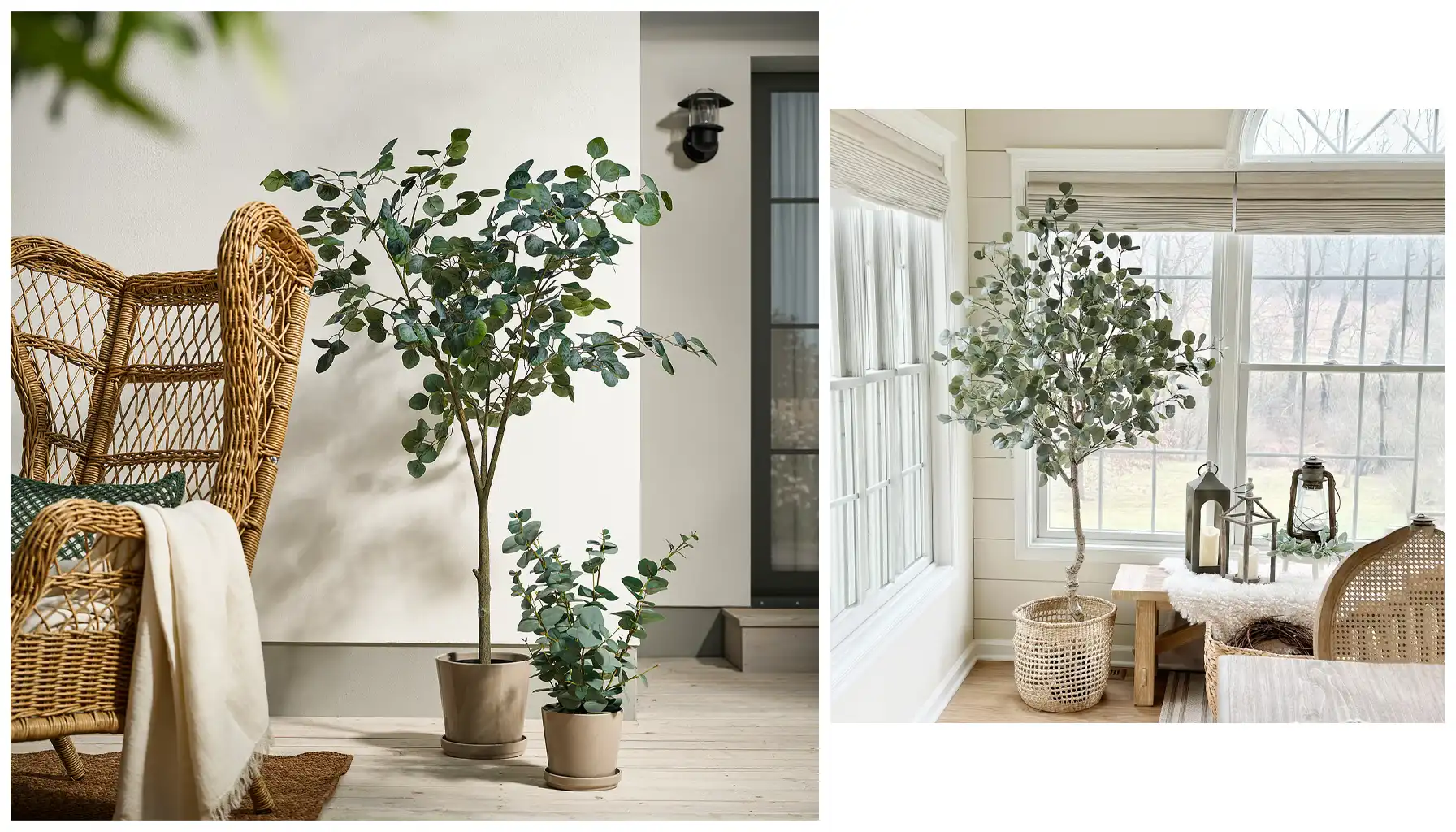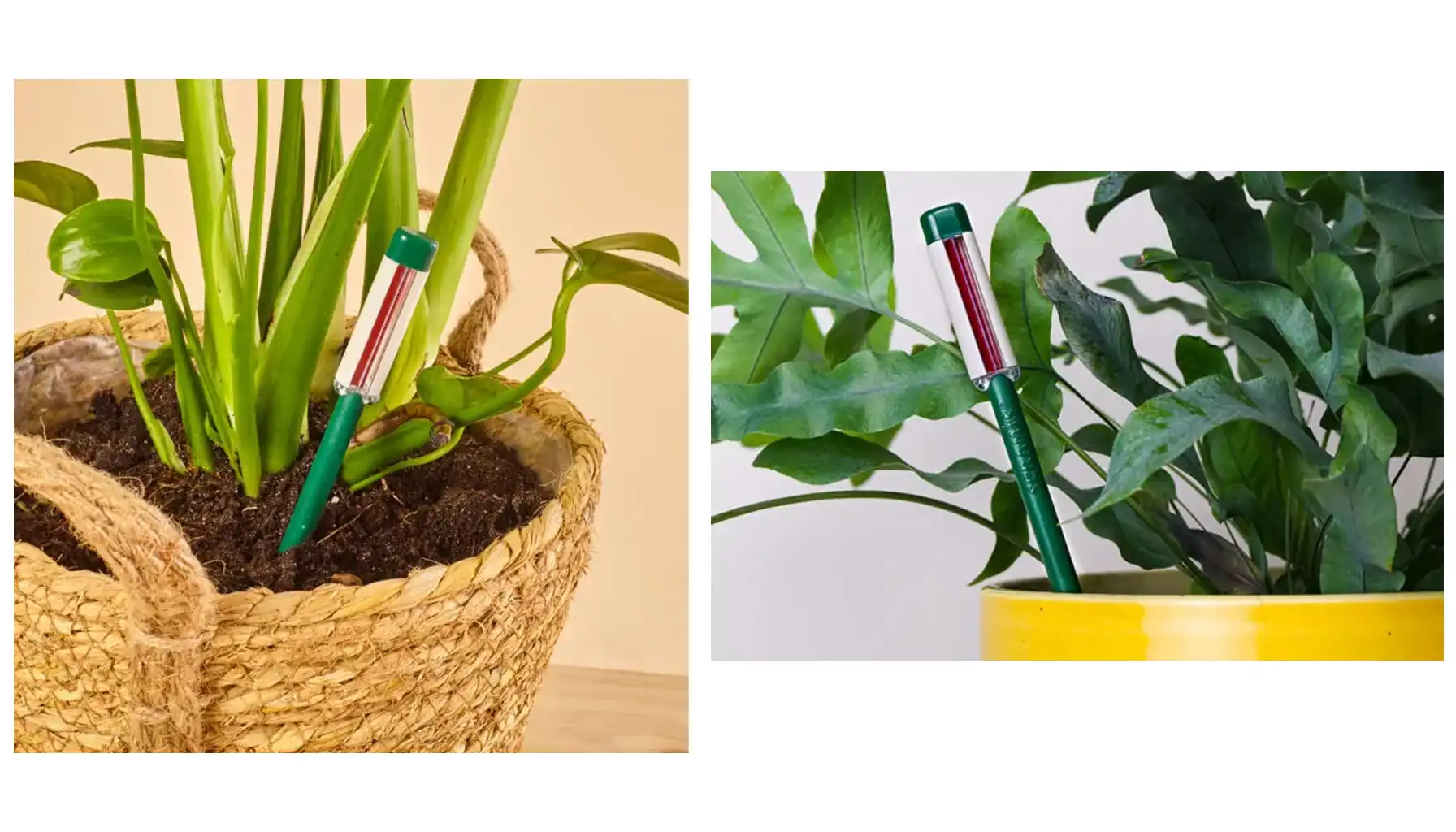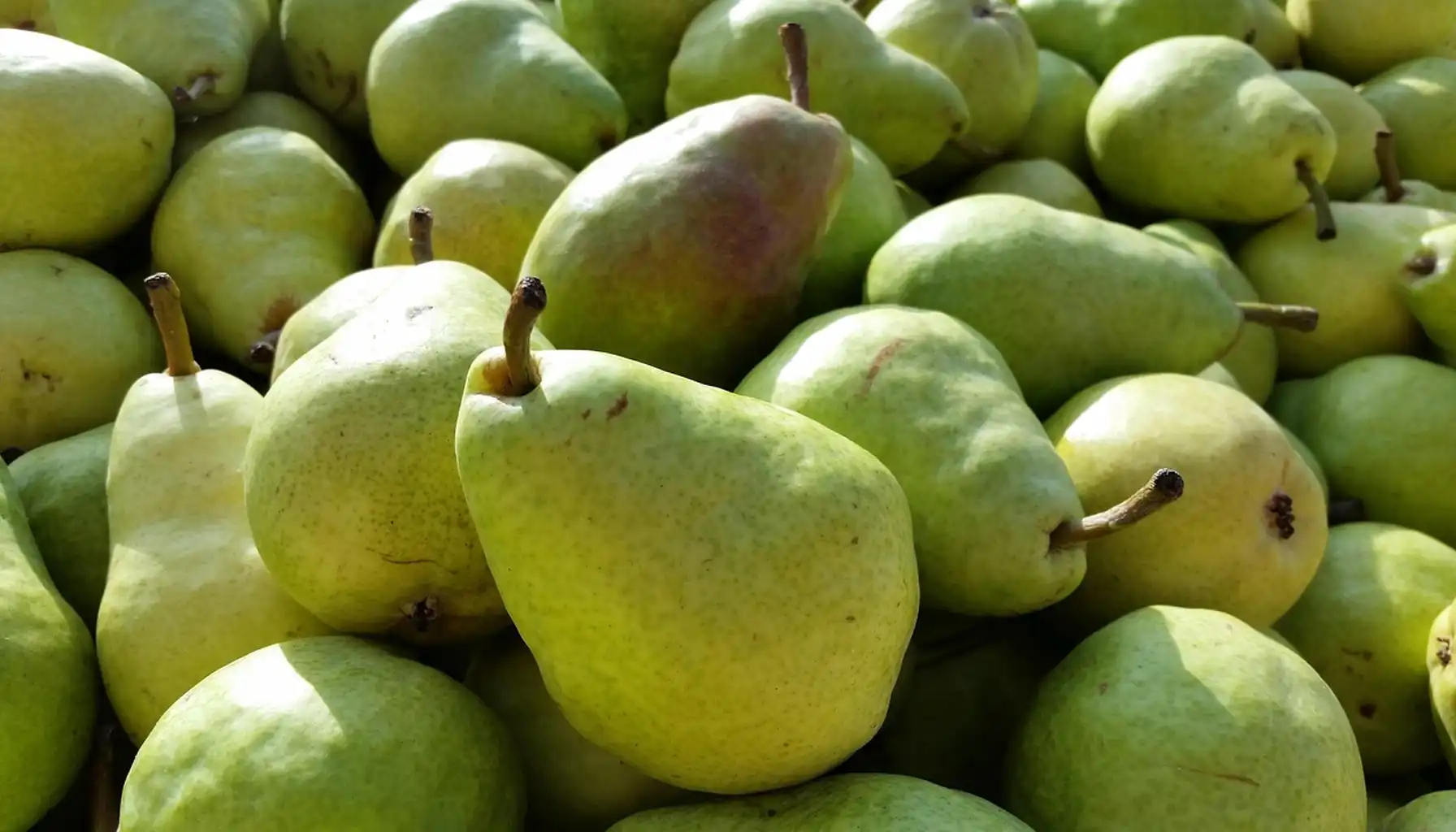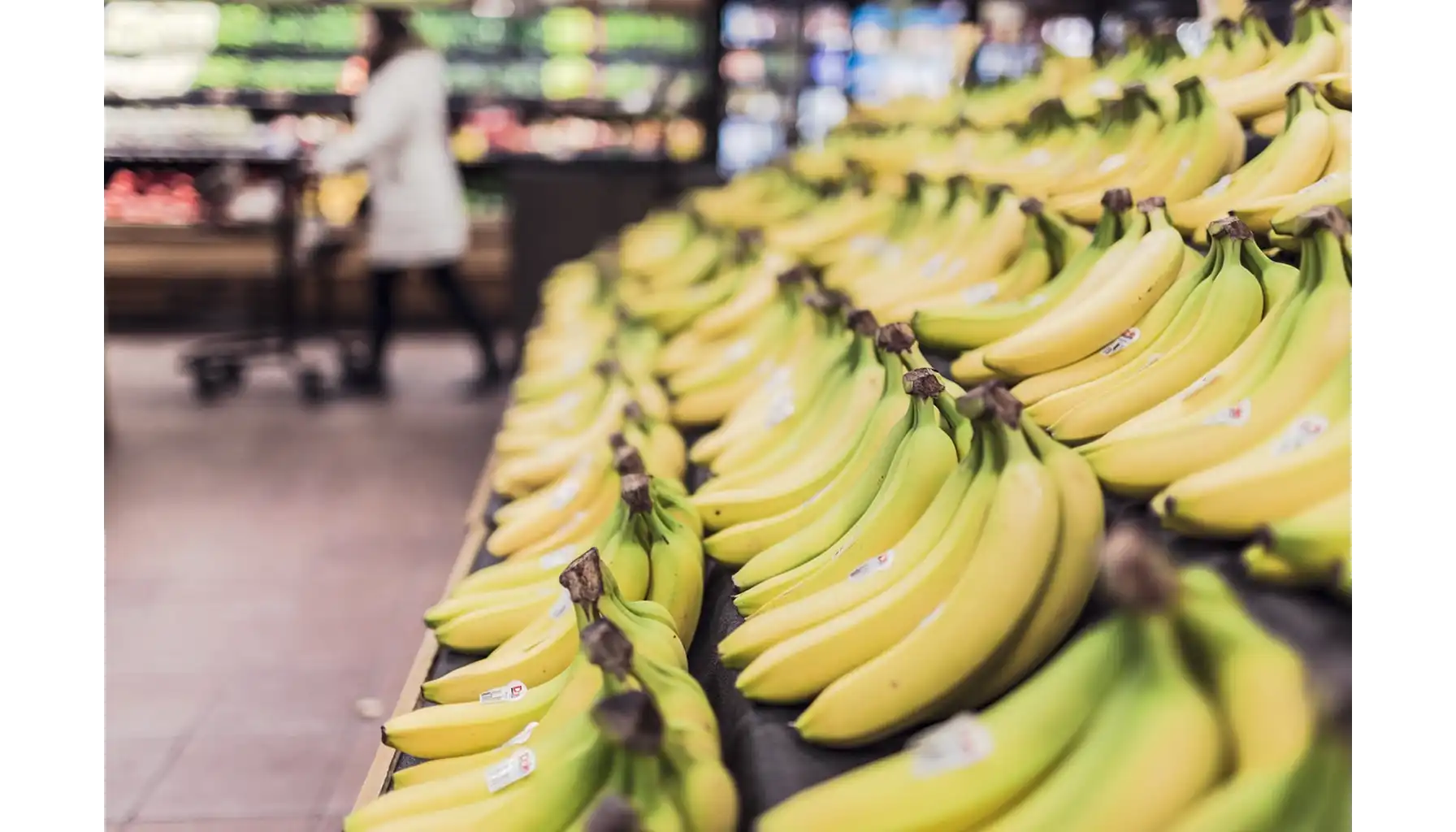Eucalyptus is much more than a snack for beloved koalas. This tree can become your companion, a cherished thing that greets you every morning. But this plant is not like most trees and requires specific care.
What does a Eucalyptus tree look like, and what does it need? Learn now in this article. A guide for identification and rich information is included.
What plant is this? The one you see outside your window. You may not know, but your phone may know with the right app.
About the Eucalyptus Plant
Eucalyptus is a famous Australian plant, though it’s now grown in many parts of the world due to its commercial and ornamental value. The name itself originates from the Greek words "eu" (meaning "well" or "good") and "kalyptos" (meaning "covered" or "hidden"), referencing the closed nature of its flower buds.
Overview |
Feature | Details |
Origin | Australia and the surrounding islands |
Type | Evergreen tree |
Size | 10 to over 200 feet (3 to 60+ meters) tall |
Life span | 50 to 200+ years, depending on species and growing conditions |
Leaf Colors | Blue-green (juvenile) to dark green (mature) |
Flowers | Creamy white, pink, red, or yellow |
Propagation | Mainly by seeds. Some species can also be propagated by cuttings |
Toxicity | Leaves and essential oil are toxic |
Special Features | Aromatic |
Eucalyptus Tree Types
When we try to imagine an Eucalyptus tree photo, we usually have just one generic image of a tree we saw in documentaries and cartoons. Very tall, with long leaves, plain green… But in actuality, there are many varieties of this plant, and we’ll have a look at some of the most prominent ones.
Lemon Eucalyptus Tree
This variety has long, green leaves with a strong lemon scent, hence the name. It grows up to 165 feet tall (50 metres). The scientific name is Corymbia citriodora, with a fun-sounding nickname Lemon Scented Gum.
This variety is commonly grown for its oil, which is used in natural insect repellents, cleaning products, and perfumes. If you tried “Madame” line perfumes, some of them contain the extract from this plant.
Eucalyptus Rainbow Tree
This variety is famous for its stunning multicolored bark. When this Eucalyptus tree bark peels away, it reveals bright green, orange, red, and purple layers.
The Rainbow Eucalyptus tree variety is represented by the Eucalyptus deglupta species (also called Rainbow Gum).
The Eucalyptus tree rainbow variety grows very tall (up to 230 feet / 70 metres) and needs a warm, humid climate to thrive. It's mainly grown as an ornamental plant.
Baby Blue Eucalyptus Tree
This is a smaller variety, usually growing up to 20 feet tall (6 metres). It has compact, silvery-blue, round leaves that are very aromatic and perfect for floral arrangements.
Compared to most other varieties, it tolerates frost better, and due to its smaller stature fits containers and small gardens.
As a side note, leaves are usually not one to one with baby blue colour, but with dimmer lighting, the leaves can reach this colour.
Silver Dollar Eucalyptus Tree
This variety is popular due to its round, silvery-blue leaves that resemble silver coins. Don’t mix it with a common Money tree (which is a totally different species, Pachira aquatica).
This tree is popular in landscaping and floral arrangements. A full grown Silver Dollar Eucalyptus tree reaches 20–50 feet (6–15 metres) and has a bushy shape. Like many common varieties, it has aromatic foliage. Beauty and function in one package.
Faux Eucalyptus Tree
You may argue that it’s not a real variety, but it's important to feature this plant due to its popularity. As you can guess by the name, Faux eucalyptus is not a real plant. An artificial Eucalyptus tree is made from materials like plastic or silk that look like real eucalyptus.
These decorations are used in home décor, weddings, and offices. Faux eucalyptus mimics popular varieties like Silver Dollar or Baby Blue. It requires no care and lasts forever.
Real Eucalyptus Tree VS Faux
Fake trades are everywhere. They want to use ignorance for their profit. And when some are trying to sell non-existent Coleus varieties, like Blue Coleus, others may try to sell you an artificial tree, masking it as a real deal.
This little table will help you discern the real deal from a plastic dud.
Feature | Real Eucalyptus | Faux Eucalyptus (Artificial) |
Texture | Soft and flexible leaves with natural variation | Leaves that feel stiff or rubbery |
Smell | Strong, distinct aroma (minty, menthol, or lemon depending on type) | No smell (or faint chemical odor if low quality) |
Color | Natural blue-green, silver, or dark green tones | Often unnaturally uniform in color, sometimes too shiny or matte |
Stems | Woody or semi-woody stems may have natural imperfections | Wire inside a plastic or fabric-covered stem |
Weight | Slightly heavier due to moisture (if fresh) | Lighter, may feel hollow or overly stiff |
Movement | Sways gently when touched or in the breeze | Often rigid, with limited movement |
Touch Test | Cool to the touch, slight oiliness possible on fingers | Dry and smooth, sometimes tacky if coated |
Eucalyptus Tree Care
This tree came from Australia, a place that is so different in climate and biodiversity than most of our world. With the right care, you can help this tree feel at home and let it grow into the big, tall tree it deserves to be.
Light Requirements
Eucalyptus trees need full sun. At least 6 to 8 hours of direct sunlight every day. Australia, their place of origin, has plenty of sun after all.
Choose a sunny, open location with good air flow, and you won't have to worry about going wrong.
Water Requirements
Water young trees regularly when the soil gets dry. Mature trees are drought-tolerant and only need water during long dry periods.
If you have an indoor Eucalyptus tree in a pot, water it when the top inch of soil feels dry. Considering that indoor examples grow slowly, you’ll have to water it for a long time, especially if you plan to keep the tree indoors permanently as a smaller one.
Temperature Requirements
Most species thrive in temperatures between 65°F and 75°F (18°C to 24°C). Some types, like Baby Blue, can handle light frost, and you can grow them outdoors in more countries.
Tropical types, like Rainbow Gum Eucalyptus tree, are not frost-tolerant, and if you grow one away from the natural habitat, you’ll have to keep this Eucalyptus tree indoors.
Soil Requirements
These trees prefer well-draining soil. Sandy or loamy soil is best. It gives the tree more stability and protects it from root rot.
Avoid clay or wet, soggy soil. This type of soil can cause root rot.
Fertilizer Requirements
Eucalyptus trees usually don’t need much fertilizer. This flora is hardy enough.
If you still want to use fertilizer, use a balanced fertilizer once in the spring.
Safety and Flammability
We usually don't think of trees as something dangerous. They’re big and might fall on us, but they are certainly not among the deadly dangerous poisonous plants. Or are they?
Eucalyptus tree leaves are poisonous. Swallowing or licking these leaves can cause nausea, vomiting, and diarrhea in people and animals. Drinking the oils made from these leaves causes the same unpleasant effects.
Kolas are famous for eating the leaves of these trees, but they build immunity. You and your cats and dogs don’t have such immunity.
Is Eucalyptus flammable? It might be dangerous if your indoor plant catches fire and then lets it spread everywhere.
Eucalyptus is extremely flammable. Its leaves and bark contain essential oil. Like any other oil, it easily catches fire. Be careful and put this flora away from anything that can cause a spark.
Eucalyptus Benefits for Owners
The Eucalyptus tree image is certainly unique. Can this plant bring more into your land/house than good looks?
Benefit | Description |
Health & Wellness | The presence of the tree alone can boost mental clarity and focus. |
Essential Oil Uses | The oils from leaves can be used in aromatherapy for relaxation. The same oils came to be used for massage, lotions, and toothpaste (but don't try to make them yourself; it’s much safer to buy). |
Home Benefits | The tree freshens the air with a clean scent. The smell repels insects like mosquitoes and flies. |
Environmental Uses | The outside grown trees provide good shade for cover plants like Ground Elder. |
Animal Uses | Food source for koalas (only for koalas). |
AI Plant Finder
AI Plant Finder is a plant identification and care app.
The platform utilizes advanced image recognition technology, and with it identifies plants by simply taking a photo. The app provides detailed information about the flora, including its name, care requirements, and potential diseases.
AI Plant Finder can help both beginners and professionals become better botanists and care for their plants better than before.
If you’d like to try this app, it’s free, and you can download it on iOS and Android.
Related AI Plant Finder Posts
